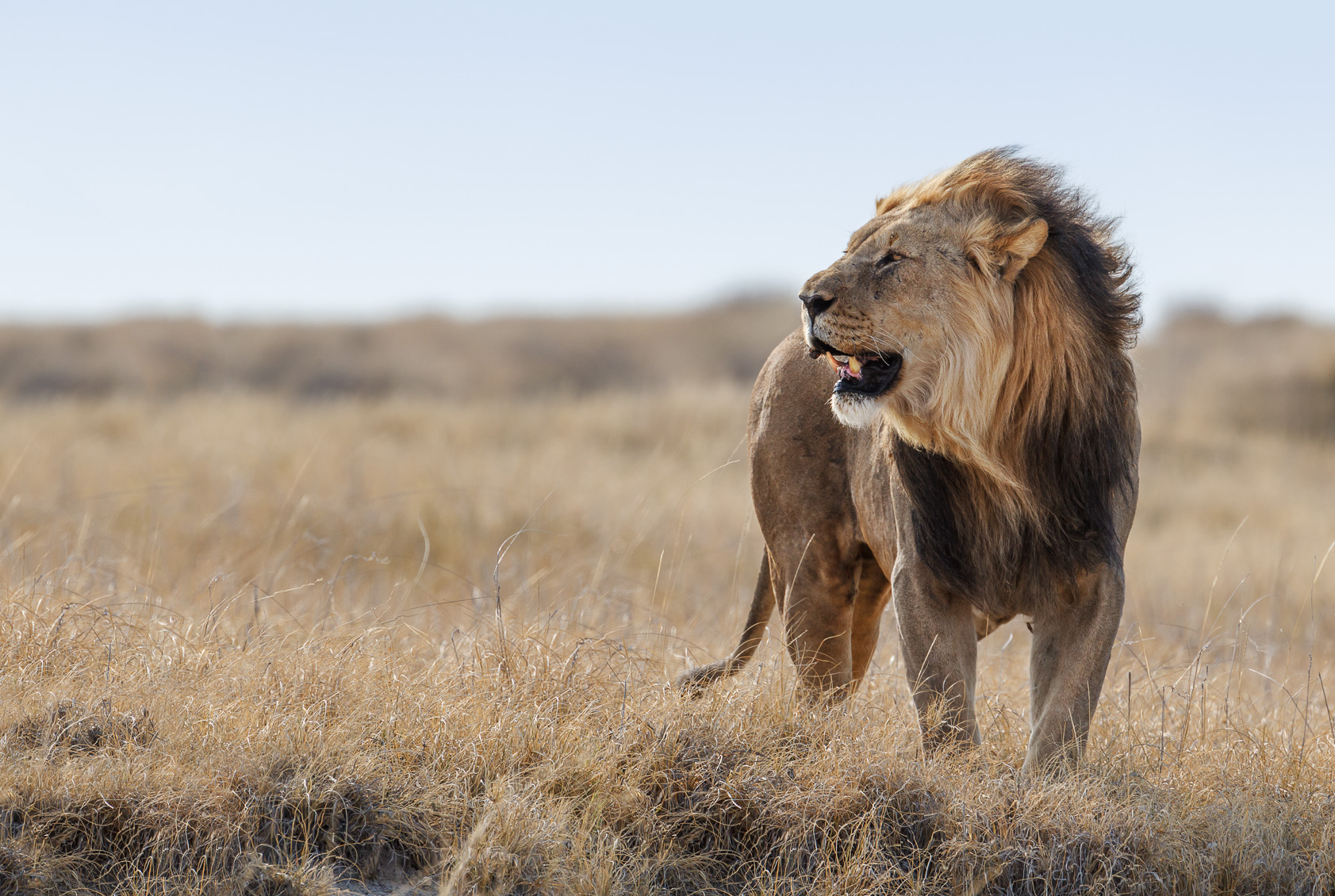The majestic African lion stands at the edge of this brown grassy plain. While the lion is looking to the left, the wind blows the mane to the right. The African lion shows the full body. Behind this beautiful predator, you see dry grassland as far as the eye can see.
African lions have a wide range of habitats and can live almost anywhere. A real example of this statement is the lions of Namibia. Like the lion in this photograph, he adapts to a harsh terrain and desert climate. Lions that live in areas with higher humidity, such as Namibia, have darker fur. You see this in the African lion photograph, which stands at the edge of the Etosha salt pan.
Lion Stands At The Edge
Indeed, we know these beautiful lions for their ability to adapt to the desert with long legs and leaner bodies than other typical lions. Namibian lions can go longer without drinking water – 2 weeks. They rely on the moisture from their prey’s blood to stay hydrated and also have to search longer and broader for prey. As a result, they eat a wider variety of animals, including birds, small antelope, and even mice.
The African lion, Panthera Leo, is in the category vulnerable on the IUCN red list.
Discover more wildlife photographs similar to ‘African lion stands at the edge of Etosha salt pan.’ In my wildlife and landscape photography portfolios, you can purchase stock photos. Fine art photography prints as wall art are as well available on our website.
This photograph is available to be purchased as a print. We offer our prints as unmounted fine art prints and framed prints that are ready-to-hang on your wall out of the box. Another option is that it can be licensed for personal or commercial use. Just click the add_shopping_cart icon left-hand side above the photo to select your choice.
For more information about the various types of prints we offer to purchase, please visit our Purchasing a print FAQ page.
Our Photo Licensing FAQ page explains the license types and helps you to choose the right license for your needs.
Before making a purchase, please read our Terms & Conditions page.

Hanneke –
Brilliant picture, absolutely obvious he is the King 💖
Anette Mossbacher –
The king of the jungle, here I would say king of the desert. This lion looks indeed proud.
Thank you very much, Hanneke.
Ciao Anette